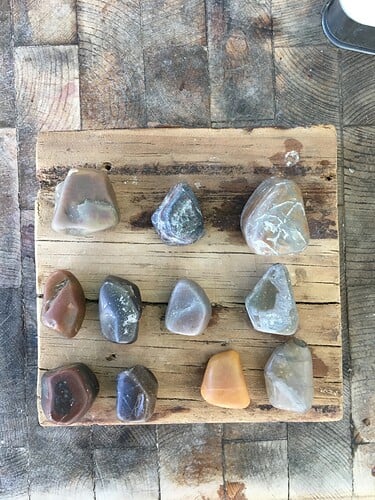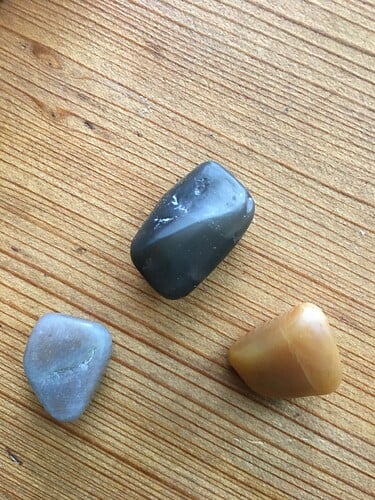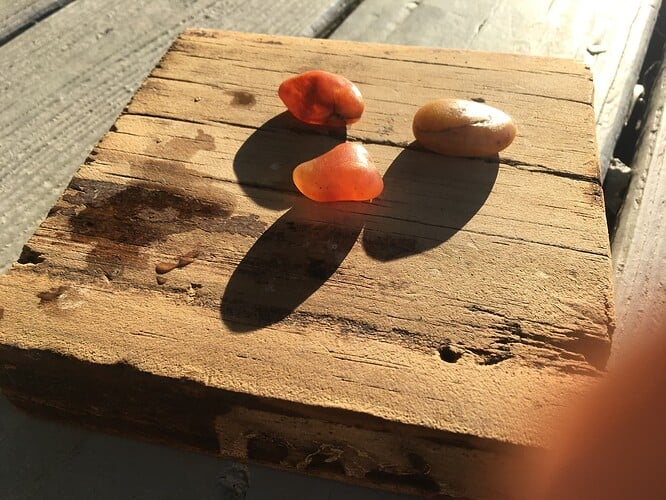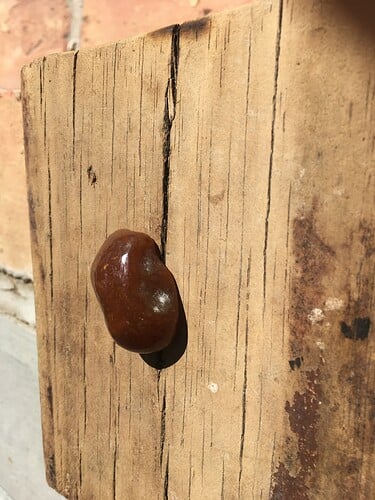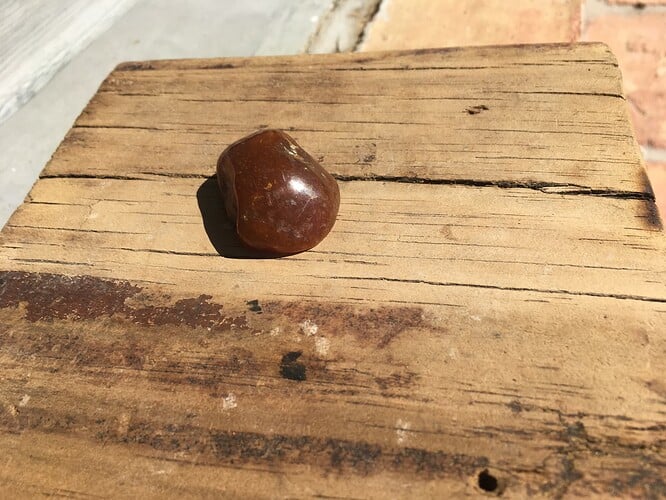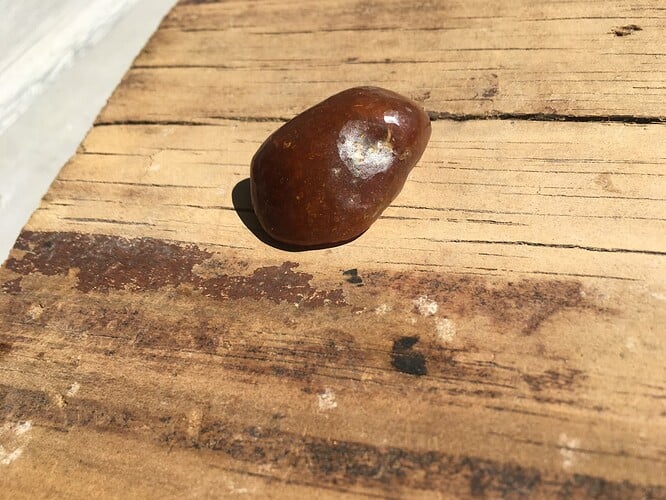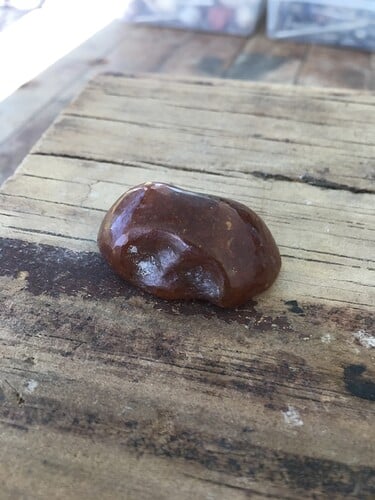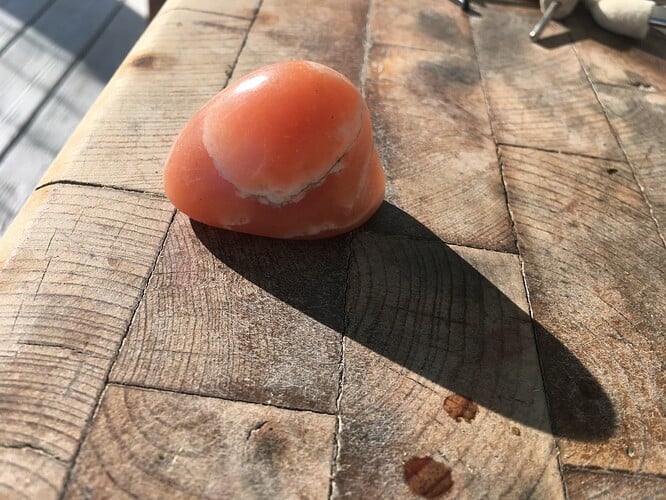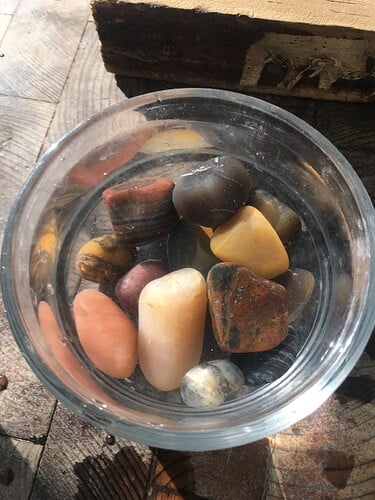Thank you Paul. That’s all I need.
I have one more immediate problem. I signed up for an account with GIA for gem identification and have been making myself anxious and have vacillated for a week over what I should send, because it’s expensive.
I called this morning only to find out they will not take a rough stone. They have to be facedted and polished. All my stones are polished. That’s how I find out what they really are. However, there are some stones which test positive for what could be fairly valuable (or not) and though I invested in a flat lap machine (Hi-Tech 6 inch; the only one I could swing) because the size of some of these are big and I know very little about faceting, I am giving myself anxiety attacks over just cutting away.
Take these for example:
The big one is 82.5 carats and the other two are 49 or so. Should I just cut them as big as possible? Practically, who would wear a big, huge gemstone and I have no idea how of which angles, etc, are the best. I have been shaving them down, following their natural shape.
So I guess the question is, should I just facet them as big and practical as possible so they could later be cut by someone who knows what they are doing? I hate to ruin anything that big, because you don’t come across it every day.
My hands are tied if I don’t. My favorite jeweler doesn’t facet and bemoans the people he sends his stones to, to be faceted. I am loathe to send something off to someone I don’t know.
I had cancer, now gone, and have so many stones it’s mind boggling and if they are worth anything, I want to set up a trust for my animals and help a few people.
The lady at GIA said they could be cabochons, but they can’t have any rough areas.
The baby blue one has a fracture on each side, which if I polish it down to be even with the other areas, I’m losing a lot (or what I perceive to be a lot) of the gemstone.
Any insight would be appreciated.
